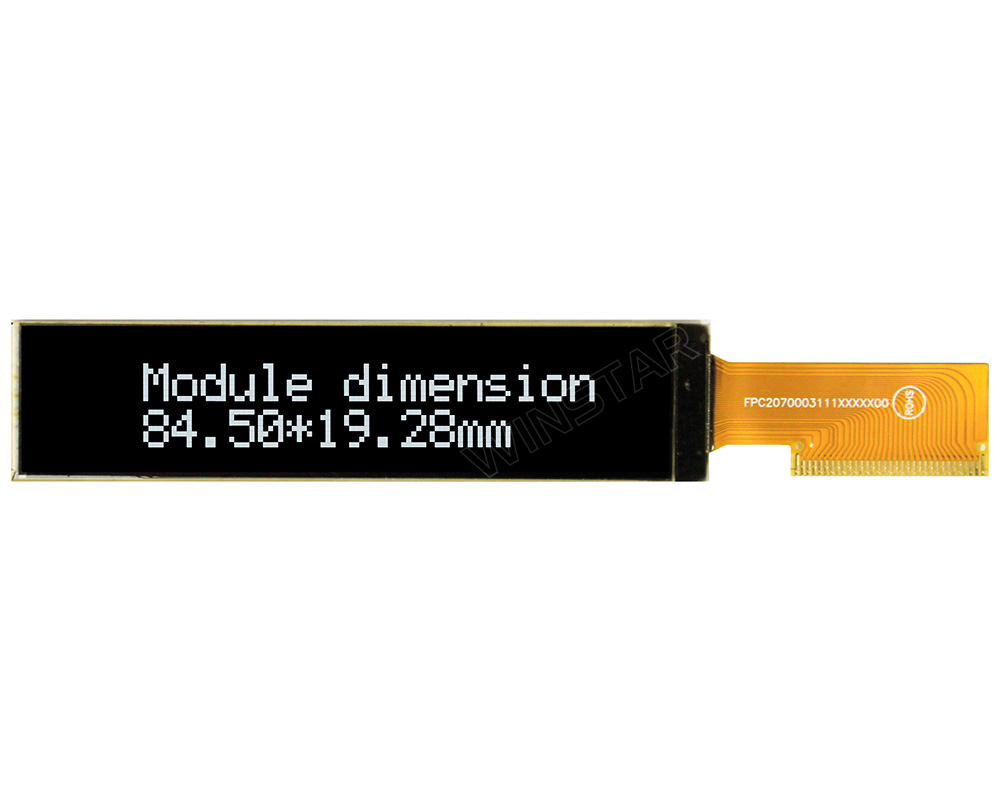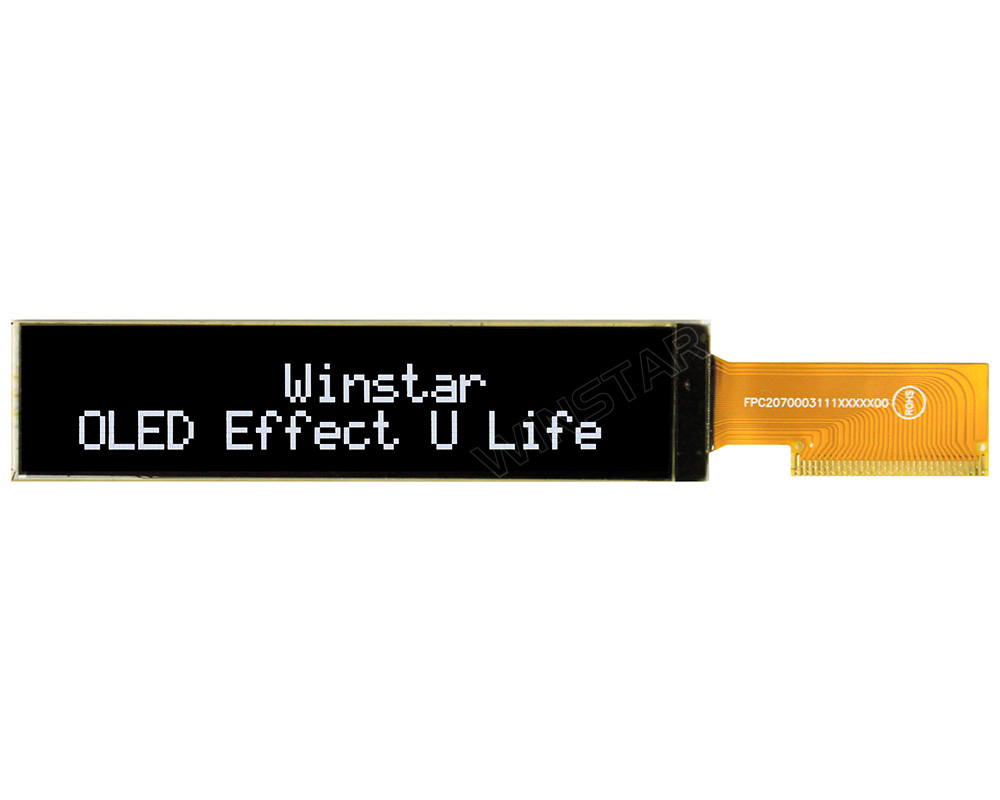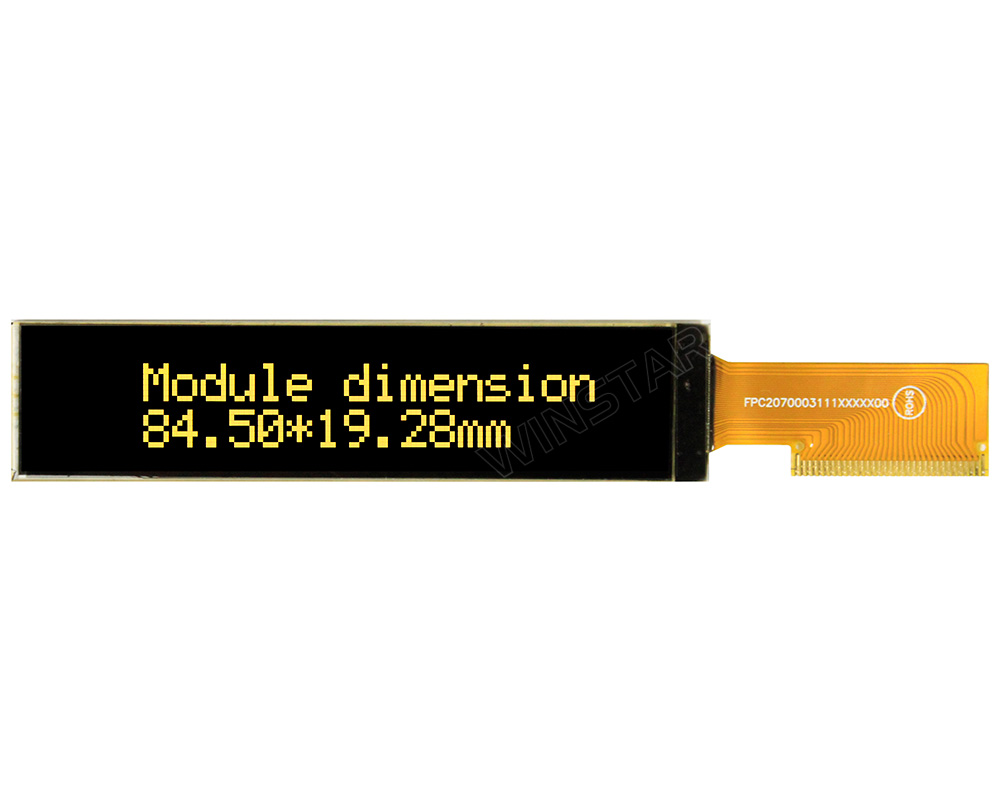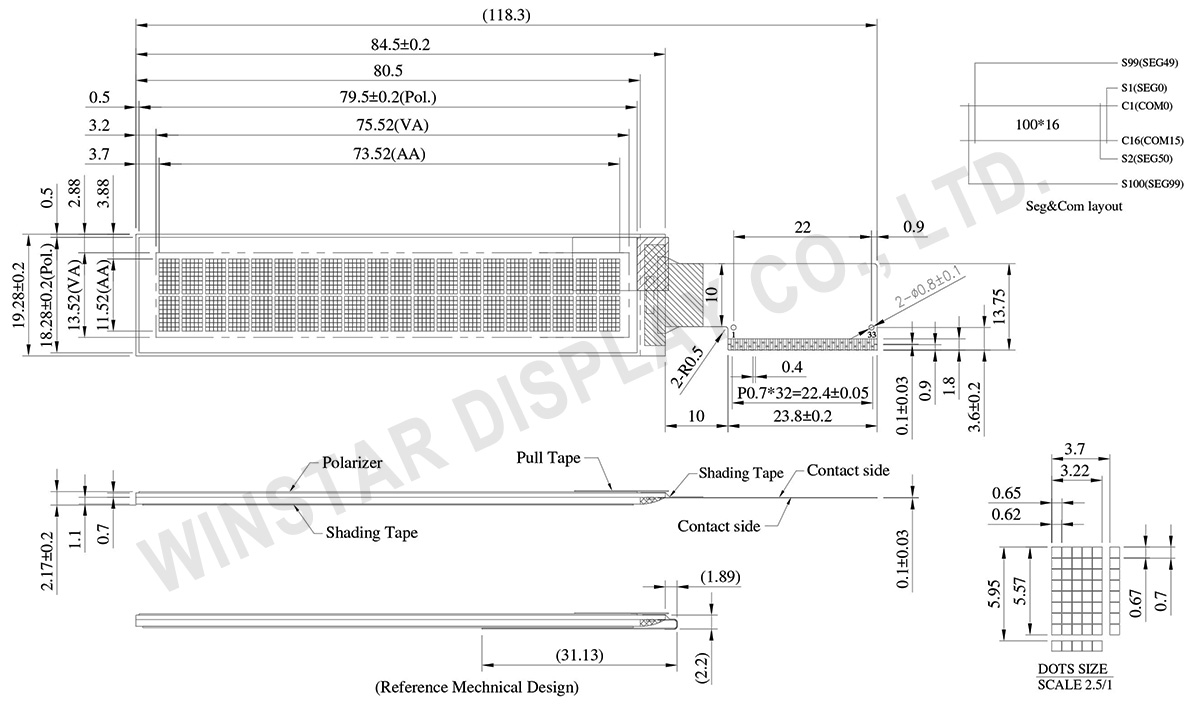Das 2 Zeilen x 20 Zeichen COG OLED-Display-Modul (Modell: WEO002002A) verwendet ein COG (Chip On Glass)-Design und bietet eine leistungsstarke und zuverlässige Anzeige-Lösung. Dieses OLED-Modul ist bekannt für seine klare Anzeige und Robustheit, was es für eine Vielzahl von Anwendungen geeignet macht.
Die Abmessungen des Moduls betragen 84,5 x 19,28 mm bei einer Dicke von 2,17 mm, und die aktive Fläche misst 73,52 x 11,52 mm, mit einer Diagonale von 2,93 Zoll. Ausgestattet mit einem SSD1311-Treiber-IC unterstützt der WEO002002A ein integriertes Zeichensatzsystem, das ASCII-, englische, europäische und japanische Zeichen umfasst. Jedes Zeichen besteht aus 5x8 Pixeln, was eine detaillierte und klare Textdarstellung gewährleistet.
Der Anzeigemodus dieses Moduls ist 2 Zeilen, wobei jede Zeile 20 Zeichen anzeigen kann. Aufgrund der selbstleuchtenden OLED-Technologie benötigt dieses Modul keine Hintergrundbeleuchtung, was zu einem leichteren und dünneren Design sowie einem verbesserten Kontrastverhältnis von 10.000:1 führt. Darüber hinaus bietet es einen extrem weiten Betrachtungswinkel von bis zu 175 Grad, der eine konsistente Anzeigequalität aus verschiedenen Blickwinkeln gewährleistet. Das Modul zeichnet sich auch durch einen niedrigen Stromverbrauch und einen breiten Betriebstemperaturbereich aus, was seine Vielseitigkeit unterstreicht.
Der Betriebstemperaturbereich des WEO002002A liegt bei -40°C bis +80°C, während der Lagertemperaturbereich bei -40°C bis +85°C liegt, was eine stabile Leistung unter extremen Bedingungen ermöglicht. Das Modul arbeitet innerhalb eines logischen Spannungsbereichs von 2,4V bis 3,3V, mit einem typischen Wert von 3V, und verwendet eine 1/16 Duty-Treiber-Methode.
Darüber hinaus unterstützt der WEO002002A mehrere Schnittstellenoptionen, darunter die 6800/8080 8-Bit parallele und I2C/SPI serielle Schnittstelle, und bietet flexible Anschlussmöglichkeiten, um unterschiedlichen Systemanforderungen gerecht zu werden. Die Modulserie bietet auch verschiedene Flexible Printed Circuit (FPC)-Optionen, um unterschiedliche Kundenbedürfnisse zu erfüllen.
Mit seiner zuverlässigen Anzeigequalität, dem breiten Betriebstemperaturbereich und den flexiblen Schnittstellenoptionen ist das WEO002002A OLED-Display-Modul eine praktische Alternative zu herkömmlichen LCD-Modulen. Wir empfehlen, dieses 2 Zeilen x 20 Zeichen OLED-Modul in Betracht zu ziehen, um die Anzeigeleistung Ihres Produkts zu verbessern und eine bessere Anzeigequalität bei gleichzeitig niedrigerem Energieverbrauch zu erzielen.
 FPC-Optionen
FPC-Optionen









